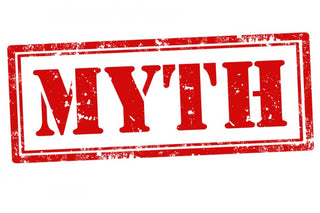Piercing has been a popular form of body modification for thousands of years, but despite its long history, many myths and misconceptions still persist. From concerns about hygiene and safety to misconceptions about aftercare and healing time, it's important to separate fact from fiction when it comes to piercing. In this Blog post, we'll take a closer look at some of the most common piercing myths and dispel them once and for all.
Myth 1: Piercings are Dangerous and Unhygienic
One of the biggest concerns people have about piercings is the risk of infection and other complications. While it's true that piercings do carry some risk, these risks can be greatly minimised by following proper aftercare instructions and visiting a professional piercer who follows strict hygiene standards. Professional piercers use sterile equipment and disposable needles, and they take the time to educate their clients about the importance of aftercare and the steps they need to take to minimize the risk of infection.
Myth 2: Cleaning Your Piercings 3x a Day is Best
Another common myth about piercings is that you should clean them multiple times a day! Over-cleaning can actually make things worse. The more you clean your piercing, the more you can aggravate and irritate the area, potentially causing bumps and swelling. When it comes to cleaning your piercing, it's important to use sterile saline (0.9% in a pressurised container). Additionally, you should avoid using alcohol, peroxide, tea tree oil, homemade salt water solutions etc as these products can be too harsh and can actually slow down the healing process.
Myth 3: You Shouldn't Change Your Jewellery During Healing
It's a common belief that you shouldn't change your jewellery. When you first get a piercing, the jewellery you're initially pierced with is often a longer barbell or a larger gauge to accommodate for swelling. As the piercing begins to heal, you should return to your piercer to switch to a shorter barbell, or a smaller gauge. Your piercer should then sterilise the new jewellery for you- which can help reduce the risk of irritation.
Myth 4: Piercings Take Forever to Heal
One of the biggest misconceptions about piercings is that they take forever to heal. While healing times can vary depending on the location of the piercing and other factors, most piercings will be settled within a few weeks but not fully healed. During the healing process, it's important to avoid touching the piercing with dirty hands, to keep the area clean, and to avoid activities that can irritate the piercing, such as playing with it or exposing it to water that isn't clean.
Myth 5: Nipple piercings stopping you from breastfeeding?
Say what?! Nipple piercings stopping you from breastfeeding? Puh-lease! This myth has been floating around and it's time to bust it! People think piercing your nipple can ruin all the milk ducts, but the reality is, a nipple has many milk ducts and a teeny-tiny piercing needle can't harm all of them. Yes, you heard that right! You can still breastfeed with a nipple piercing, and your milk flow will be just as amazing as before! Remember to remove any nipple bling while breastfeeding, as it can be a choking hazard for your little one. So, go ahead and pierce away, mama! You've got this. Just be mindful: you shouldn't get pierced whilst pregnant or breastfeeding as it may affect the healing.
Conclusion
By separating fact from fiction, you can make an informed decision about whether piercing is right for you, and you can take the steps necessary to minimise the risk of complications and promote healing. If you're interested in getting a piercing, be sure to visit a professional piercer who follows strict hygiene standards and can answer any questions you may have. With the right aftercare and a little patience, your piercing can be a beautiful and safe addition to your body art collection.
